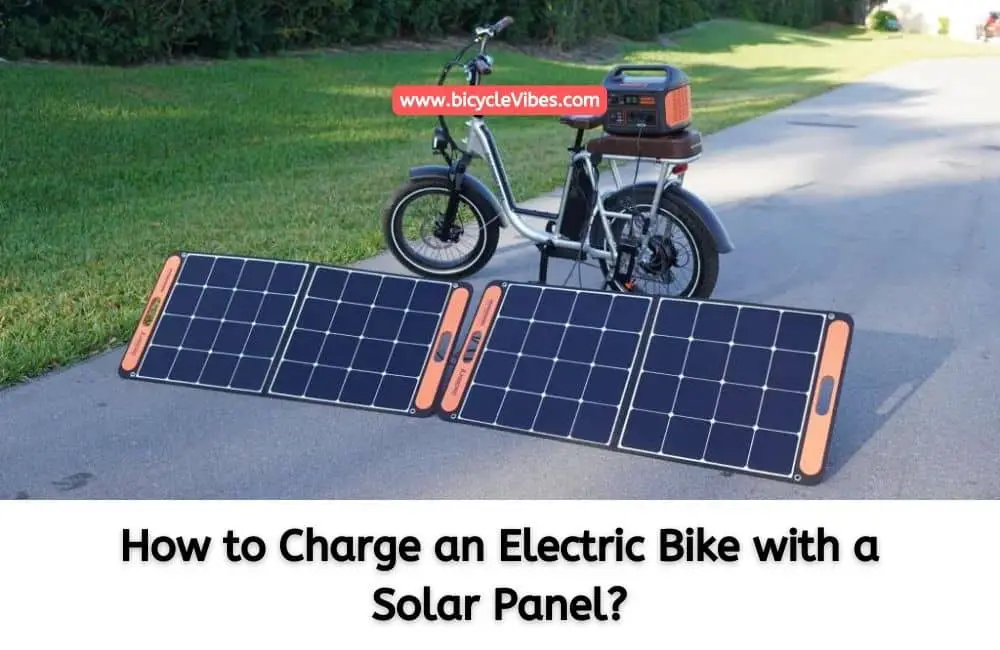
Many electric bike owners wonder if they can charge their bikes with a solar panel. While traditional rooftop solar panels are large and impractical to transport, there are portable solar panels designed for on-the-go use. So, can you charge an electric bike with a solar panel? The answer is a resounding yes.
Manufacturers have designed portable solar panels for charging electric bikes, and in this article, we will discuss these solar panels, how they work, and more. Continue reading to learn more.
Is a Solar Charger Necessary for Your Electric Bike?
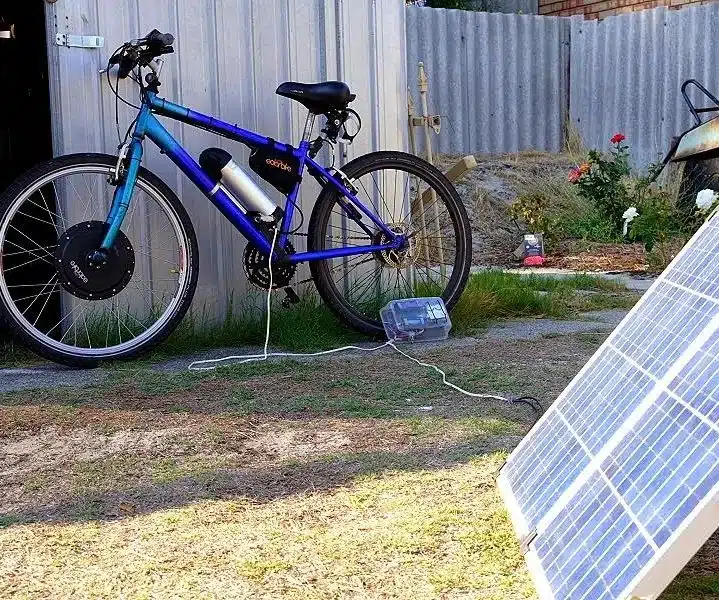
Owning an electric bike is great, but the last thing you want is to be stranded in the middle of nowhere when your battery dies. That’s why having a solar charger(on Amazon) is a must for any electric bike owner. Solar chargers are affordable, lightweight, and portable, making them an excellent addition to your gear.
One of the best things about solar chargers is their economic efficiency and environmental friendliness. You only need to place them under bright sunlight to charge them, and they don’t harm the planet in any way. Solar panels designed for electric bike charging are also portable, unlike traditional rooftop panels.
When it comes to charging your electric bike with a solar panel (on Amazon), there are several ways to do it. The most important thing to consider is the wattage output of the panel, so make sure it has a decent wattage output to ensure a quick and effective charge. With a portable solar panel, you can carry it with you anywhere and enjoy the peace of mind that comes with knowing you’ll never be stranded with a dead battery.
What is the Process of Charging Your Electric Bike with a Solar Panel?
Charging an electric bike with a solar panel is a straightforward process, but it requires some knowledge of e-bike maintenance. The process involves figuring out how your e-bike will interact with the solar panel, choosing the right solar panel, purchasing the necessary wiring equipment, connecting your e-bike to the charging system, placing the solar panel in direct sunlight to charge the e-bike, and taking it for a ride.
1. Understand the e-bike’s charging system and how it will interact with the solar panel
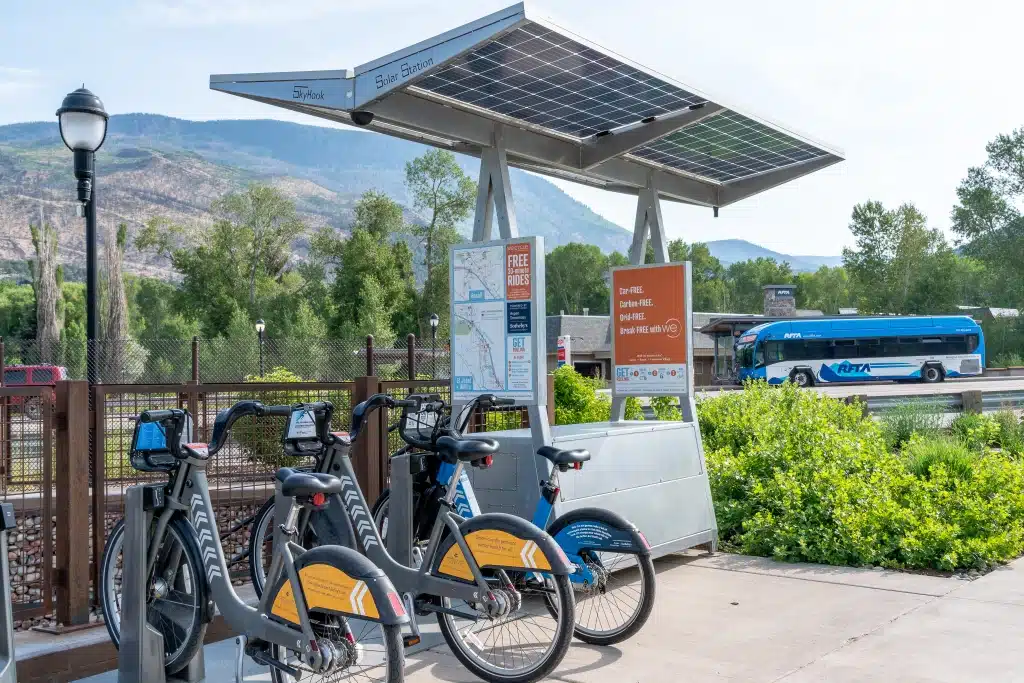
Charging your electric bike while traveling is possible, but it depends on the type of e-bike you own. Some bikes do not offer the option to charge while riding because their electric assist is not connected to a charger. However, some e-bikes can be charged while riding, which is incredibly convenient.
The first thing you need to know is whether your e-bike allows for charging while riding. If it does not, then you need to determine how much power you’ll need for your journey and plan accordingly. This may mean stopping to charge your bike along the way and bringing the necessary supplies with you.
To determine whether your e-bike can be charged while riding, plug in the charging cord and check if the pedal assist comes online. If the charging sign appears on the display but the throttle and pedal assist do not work, it means that you cannot charge and ride your bike at the same time. It’s essential to know whether your e-bike allows for charging while riding to ensure that you have a reliable power source throughout your journey.
2. Choose the Right Solar Panel
It’s important to carefully consider which type of solar panel will be best for your needs and budget. Each type of solar panel (on Amazon) has its own advantages and disadvantages, so it’s important to weigh them carefully before making a decision.
Portable, foldable solar panel chargers are ideal for riders who need to travel long distances without access to electrical outlets. They are easy to transport and can be charged during the day, but they are more expensive and can add extra weight to your bike.
Stationary solar panels are lightweight and less expensive, but they are not portable and you will need to plan ahead to ensure that you have enough power for your entire trip.
Using a trailer or rear rack can allow you to charge your electric bike while riding it, but it can also be heavy and restrict your mobility. This option is the most expensive of the three, but it is also the most reliable for long-distance trips.
Ultimately, the type of solar panel you choose will depend on your specific needs and circumstances. Consider your budget, the distance you plan to travel, and the availability of electrical outlets or other power sources when making your decision.
3. Purchase all the necessary wiring equipment
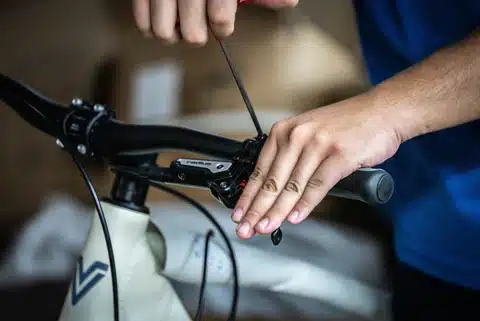
Solar panels work by gathering energy and sending it to a battery bank through a series of wires. However, since they are integrated into electric bikes, they don’t charge on their own. To effectively charge an e-bike using solar panels, it’s important to pair the solar panel with a charger controller, also known as a maximum power point tracker (MPPT).
The primary role of the MPPT is to convert and optimize the energy generated by the solar panel for use by the e-bike’s battery. While most solar panels come with an MPPT, it’s essential to ensure that the one you have is reliable. If not, it is highly recommended to purchase a new one.
With a reliable MPPT, you can be sure that your solar panel is functioning optimally and that the energy it generates is being used efficiently. This will not only help extend the lifespan of your e-bike’s battery but also reduce your overall energy costs. Therefore, it’s crucial to have a reliable MPPT to make the most of your solar panel and e-bike.
4. Connect the solar panel to your e-bike’s charging system
The charging system comprises the charge controller, solar panel, and battery. It’s crucial to avoid connecting the battery and solar panel directly to each other when connecting the e-bike to the system, as this can cause severe damage. Instead, it’s necessary to connect the battery and solar panel to the charge controller to ensure a successful charge.
When connecting the charging system, it’s essential to prioritize safety by protecting your hands and eyes. It’s important to follow all the guidelines provided in the charger controller manual strictly. By doing so, you can avoid accidents and damages that may arise from improper handling of the charging system.
Read Also: Wing Freedom S2: The Ultimate Review
5. Put Your Solar Panels in the Sunlight to Charge Your E-bike
After ensuring that everything is safely connected, it’s vital to position the solar panel in a location where it can get maximum sunlight. Placing it in a spot with the most sunlight will allow you to optimize your ability to harness all the energy released from the sun.
6. Test it
After following all the necessary instructions, you can unplug the charging system and test your bike to confirm if it has charged correctly.



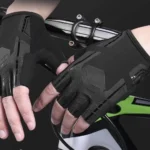



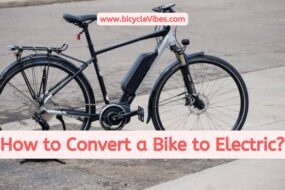

One reply on “How to Charge an Electric Bike with a Solar Panel?”
[…] READ ALSO: How to Charge an Electric Bike with a Solar Panel? […]